Monitoring Dynamically Changing Migratory Flocks Using an Algebraic Graph Theory-Based Clustering Algorithm
Abstract
1. Introduction
2. Clustering Algorithm Based on the Algebraic Graph Theory
| Algorithm 1 The pseudo-code of step IV. |
| Inputs: the clustering matrix, for i = 2: for j = 1: m = find( == 0); % Find all the indices of the columns that may need to be swapped. if ~isempty(m) L = length(m); if m(1) == − L + 1 break % This row does not need to swap with other rows. else n = m (1); % Find the first zero entry. while == 0 k = k + 1; % Find the first non-zero entry to be swapped. end temp1 = ; = ; = temp1; temp2 = ; = ; = temp2; end end end |
3. The Modifications for Practical Applications Using an Omni-Directional Scanning Radar
3.1. Reduction of the Similarity Matrix’s Exponent
3.2. The Fusion of Multiple Sectors
- The scanning area is divided into M sectors; the angle of each sector is 360°/M. Calculate the azimuth of each measurement and sort them into the corresponding sectors;
- Check the grouping results in each sector and flag the groups near the edges. The detailed steps are as follows:
- (i)
- For a specific group in the L-th sector, compute the azimuth angle of one measurement, which is denoted as . The azimuth of the left edge of the L-th sector is denoted as and the right edge is denoted as . Set the threshold . If , then flag the measurement’s group as being near the left edge and if , then flag the group as being near the right edge. Otherwise, this group will not be involved in the rest of the process;
- (ii)
- Flag all the groups in all the sectors according to the steps in (i);
- (iii)
- Starting from the 1st sector, the groups near the right edge in the current sector are fused with the group near the left edge in the next sector in a clockwise sequence until the fusion of all the groups is completed. The fusion method is described in Section 2. The fusion results between sectors are shown in Figure 7.
4. Simulation and Experimental Results
4.1. Phased Array Radar System and Setup
4.2. Experimental Results: Migration Bird Flock at Dawn, 23 September 2022
4.2.1. Huge Stork Flock
4.2.2. Medium Flock
5. Conclusions
Author Contributions
Funding
Data Availability Statement
Conflicts of Interest
References
- Van Doren, B.M.; Horton, K.G. A continental system for forecasting bird migration. Science 2018, 361, 1115–1118. [Google Scholar] [CrossRef]
- Long, T.; Hu, C.; Wang, R.; Zhang, T.; Kong, S.; Li, W.; Cai, J.; Tian, W.; Zeng, T. Entomological Radar Overview: System and Signal Processing. IEEE Aerosp. Electron. Syst. Mag. 2020, 35, 20–32. [Google Scholar] [CrossRef]
- Metz, I.C.; Ellerbroek, J.; Mühlhausen, T.; Kügler, D.; Hoekstra, J.M. The bird strike challenge. Aerospace 2020, 7, 26. [Google Scholar] [CrossRef]
- Dhanjal-Adams, K.L.; Bauer, S.; Emmenegger, T.; Hahn, S.; Lisovski, S.; Liechti, F. Spatiotemporal Group Dynamics in a Long-Distance Migratory Bird. Curr. Biol. 2018, 28, 2824–2830. [Google Scholar] [CrossRef]
- Teitelbaum, C.S.; Converse, S.J.; Fagan, W.F.; Böhning-Gaese, K.; O’Hara, R.B.; Lacy, A.E.; Mueller, T. Experience drives innovation of new migration patterns of whooping cranes in response to global change. Nat. Commun. 2016, 7, 12793. [Google Scholar] [CrossRef]
- Beauchamp, G. Long-distance migrating species of birds travel in larger groups. Biol. Lett. 2011, 7, 692–694. [Google Scholar] [CrossRef][Green Version]
- Lengyel, S.; Tar, J.; Rózsa, L. Flock size measures of migrating lesser white-fronted geese Anser erythropus. Acta Zool. Acad. Sci. Hung. 2012, 58, 297–303. [Google Scholar]
- Cui, K.; Hu, C.; Wang, R.; Sui, Y.; Mao, H.; Li, H. Deep-learning-based extraction of the animal migration patterns from weather radar images. Sci. China Inf. Sci. 2020, 63, 140304. [Google Scholar] [CrossRef]
- Phillips, A.C.; Majumdar, S.; Washburn, B.E.; Mayer, D.; Swearingin, R.M.; Herricks, E.E.; Guerrant, T.L.; Beckerman, S.F.; Pullins, C.K. Efficacy of avian radar systems for tracking birds on the airfield of a large international airport. Wildl. Soc. Bull. 2018, 42, 467–477. [Google Scholar] [CrossRef]
- Plonczkier, P.; Simms, I.C. Radar monitoring of migrating pink-footed geese: Behavioural responses to offshore wind farm development. J. Appl. Ecol. 2012, 49, 1187–1194. [Google Scholar] [CrossRef]
- Geng, W. Study of group-initialization method based on group-target center of geometry. Syst. Eng. Electron. 2008, 30, 269–272. [Google Scholar]
- MacQueen, J. Some methods for classification and analysis of multivariate observations. In Proceedings of the Fifth Berkeley Symposium on Mathematical Statistics and Probability, Berkeley, CA, USA, 1 January 1967; pp. 281–297. [Google Scholar]
- Sander, J.; Ester, M.; Kriegel, H.-P.; Xu, X. Density-Based Clustering in Spatial Databases: The Algorithm GDBSCAN and Its Applications. Data Min. Knowl. Discov. 1998, 2, 169–194. [Google Scholar] [CrossRef]
- Li, T.; Corchado, J.M.; Chen, H. Distributed Flooding-then-Clustering: A Lazy Networking Approach for Distributed Multiple Target Tracking. In Proceedings of the 2018 21st International Conference on Information Fusion (FUSION), Cambridge, UK, 10–13 July 2018; pp. 2415–2422. [Google Scholar]
- Li, T.; Corchado, J.M.; Sun, S.; Bajo, J. Clustering for filtering: Multi-object detection and estimation using multiple/massive sensors. Inf. Sci. 2017, 388–389, 172–190. [Google Scholar] [CrossRef]
- Zhang, T.; Ramakrishnan, R.; Livny, M. BIRCH: An efficient data clustering method for very large databases. ACM Sigmod Rec. 1996, 25, 103–114. [Google Scholar] [CrossRef]
- Guha, S.; Rastogi, R.; Shim, K. CURE: An efficient clustering algorithm for large databases. ACM Sigmod Rec. 1998, 27, 73–84. [Google Scholar] [CrossRef]
- Tao, Y.; Jiang, X. Radar Detection Target Clustering Algorithm Based on Similarity Matrix. Fire Control Radar Technol. 2018, 47, 40–44. [Google Scholar]
- Ai, W.; Zhang, D. A Dynamic Target Grouping Approach Based on Grouping Matrix. Radio Eng. 2015, 45, 64–68. [Google Scholar]
- Biggs, N. Algebraic Graph Theory; Cambridge University Press: London, UK, 1974; pp. 9–13. [Google Scholar]
- Jiang, Q.; Wang, R.; Zhou, C.; Zhang, T.; Hu, C. Modified Bayesian Group Target Track Initiation Algorithm Based on Algebraic Graph Theory. J. Electron. Inf. Technol. 2021, 43, 531–538. [Google Scholar]
- Ballerini, M.; Calbibbo, N.; Candeleir, R.; Cavagna, A.; Cisbani, E.; Giardina, I.; Lecomte, V.; Orlandi, A.; Parisi, G.; Procaccini, A.; et al. Interaction ruling animal collective behavior depends on topological rather than metric distance: Evidence from a field study. Proc. Natl. Acad. Sci. USA 2008, 105, 1232–1237. [Google Scholar] [CrossRef] [PubMed]
- Lukeman, R.; Li, Y.X.; Edelstein-Keshet, L. Inferring individual rules from collective behavior. Proc. Natl. Acad. Sci. USA 2010, 107, 12576–12580. [Google Scholar] [CrossRef]
- Smith, M.E.; Varshney, P.K. Intelligent CFAR processor based on data variability. IEEE Trans. Aerosp. Electron. Syst. 2000, 36, 837–847. [Google Scholar] [CrossRef]
- Cai, J.; Wang, R.; Hu, C.; Luo, W.; Liu, H.; Zhang, N. Target Detection and Density Inversion of Migrating Insects Based on a Novel Scanning Insect Radar. J. Signal Process. 2022, 38, 1333–1352. [Google Scholar]
- Hu, C.; Yan, Y.; Wang, R.; Jiang, Q.; Cai, J.; Li, W. High-resolution, multi-frequency and full-polarization radar database of small and group targets in clutter environment. Sci. China Inf. Sci. 2023, 66, 227301. [Google Scholar] [CrossRef]
- Koch, W.; Saul, R. A Bayesian Approach to Extended Object Tracking and Tracking of Loosely Structured Target Groups. In Proceedings of the 2005 7th International Conference on Information Fusion, Philadelphia, PA, USA, 25–28 July 2005; pp. 827–834. [Google Scholar]
- Koch, J.W. Bayesian approach to extended object and cluster tracking using random matrices. IEEE Trans. Aerosp. Electron. Syst. 2008, 44, 1042–1059. [Google Scholar] [CrossRef]


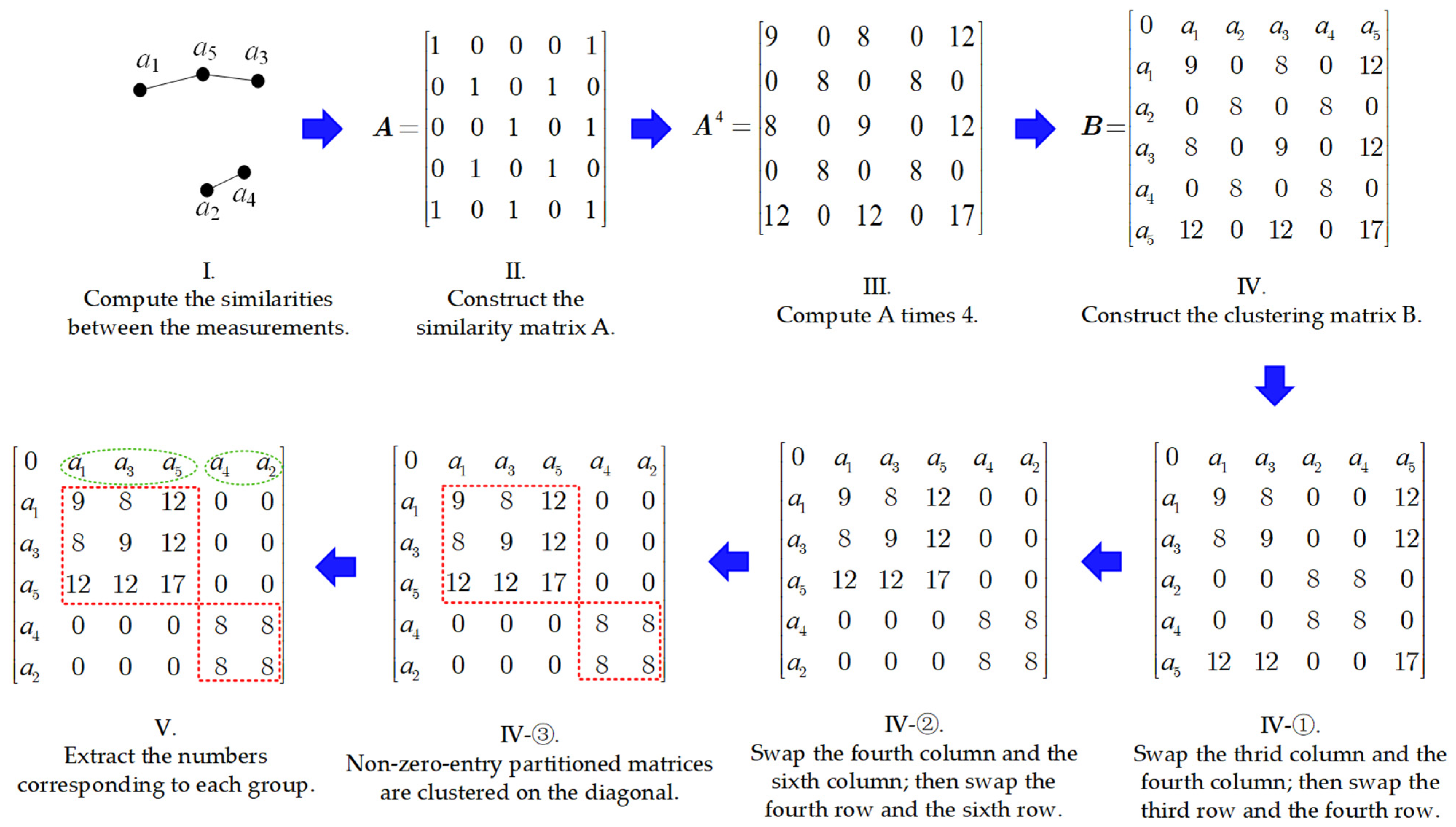
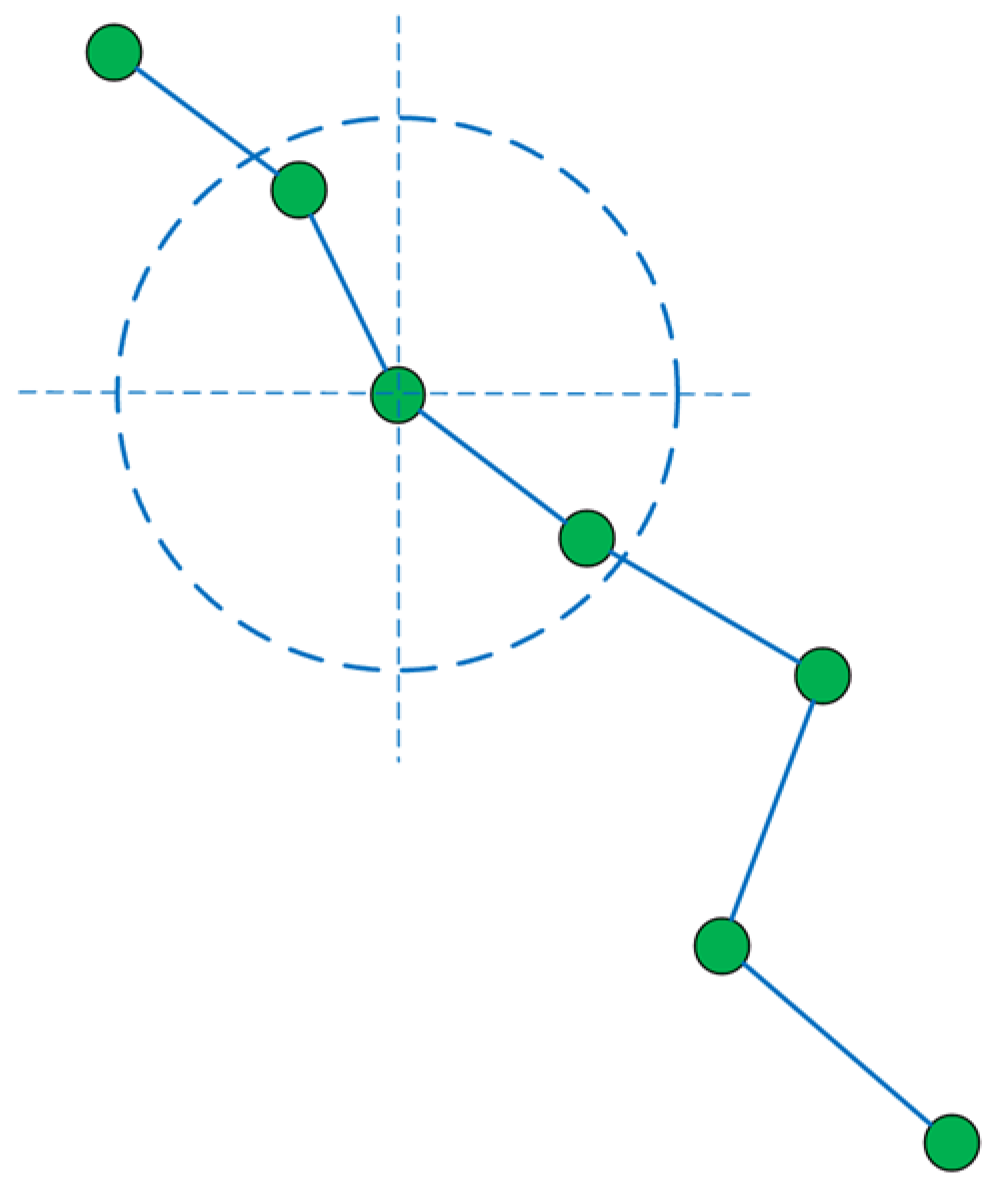
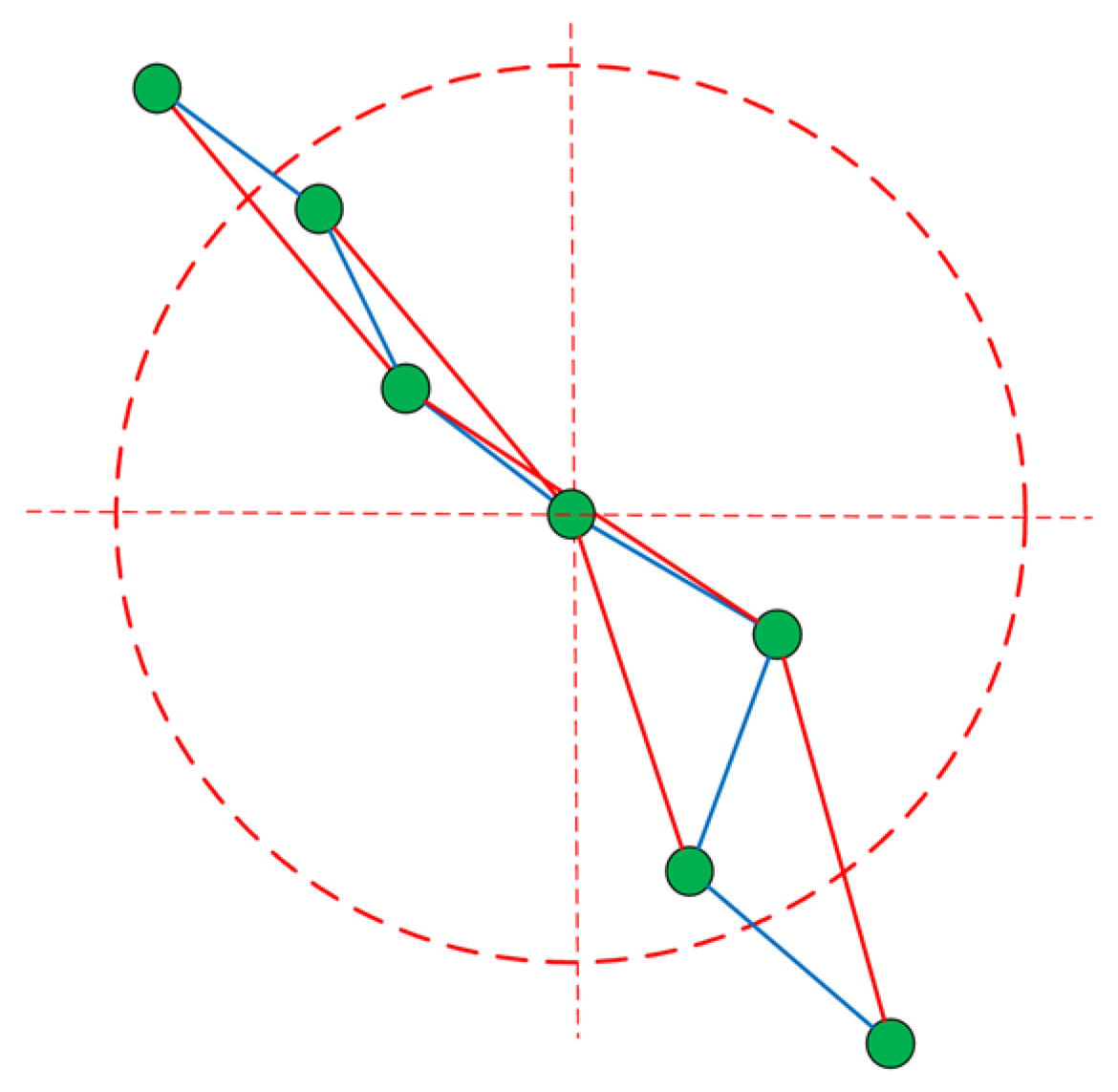

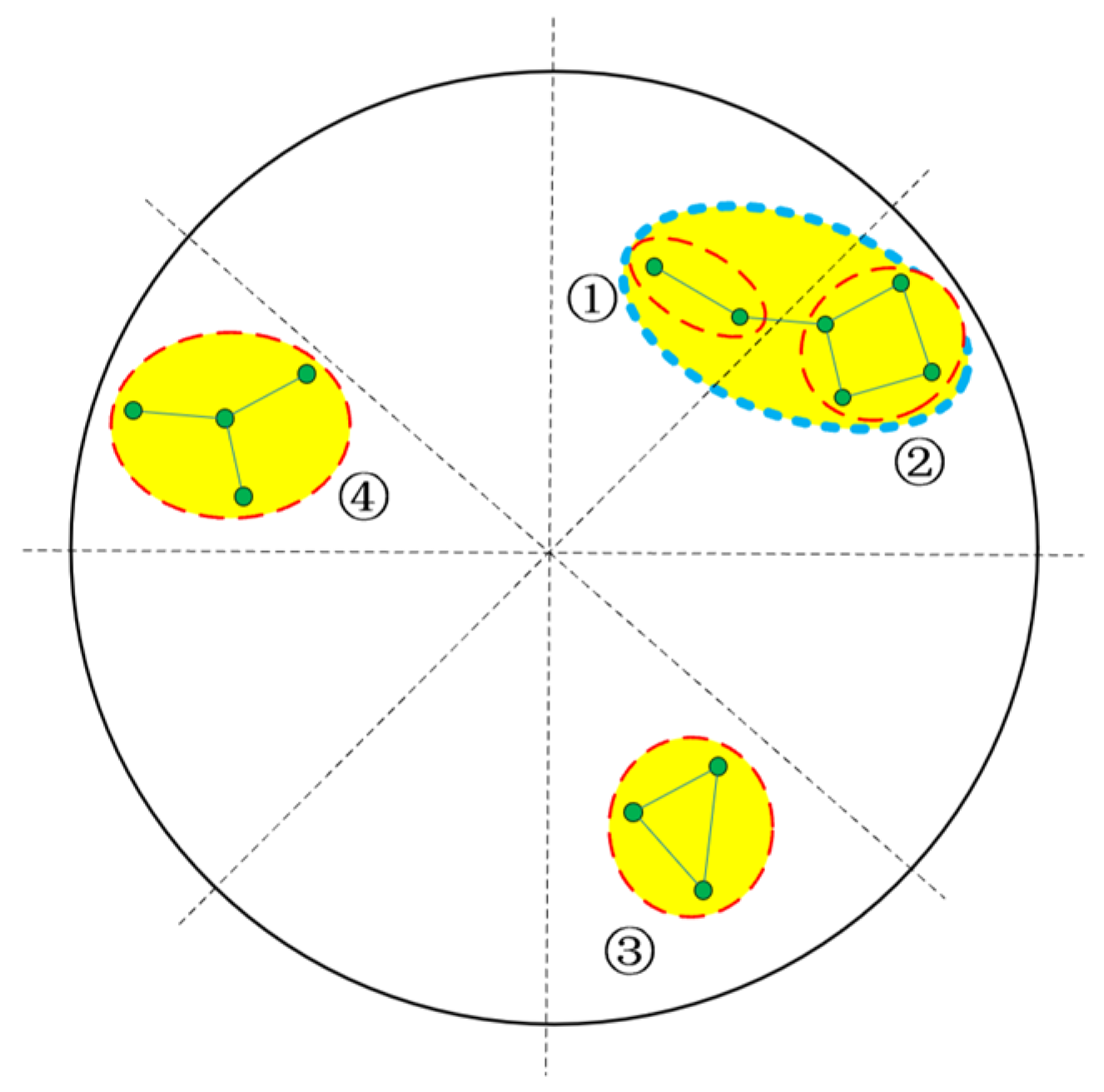
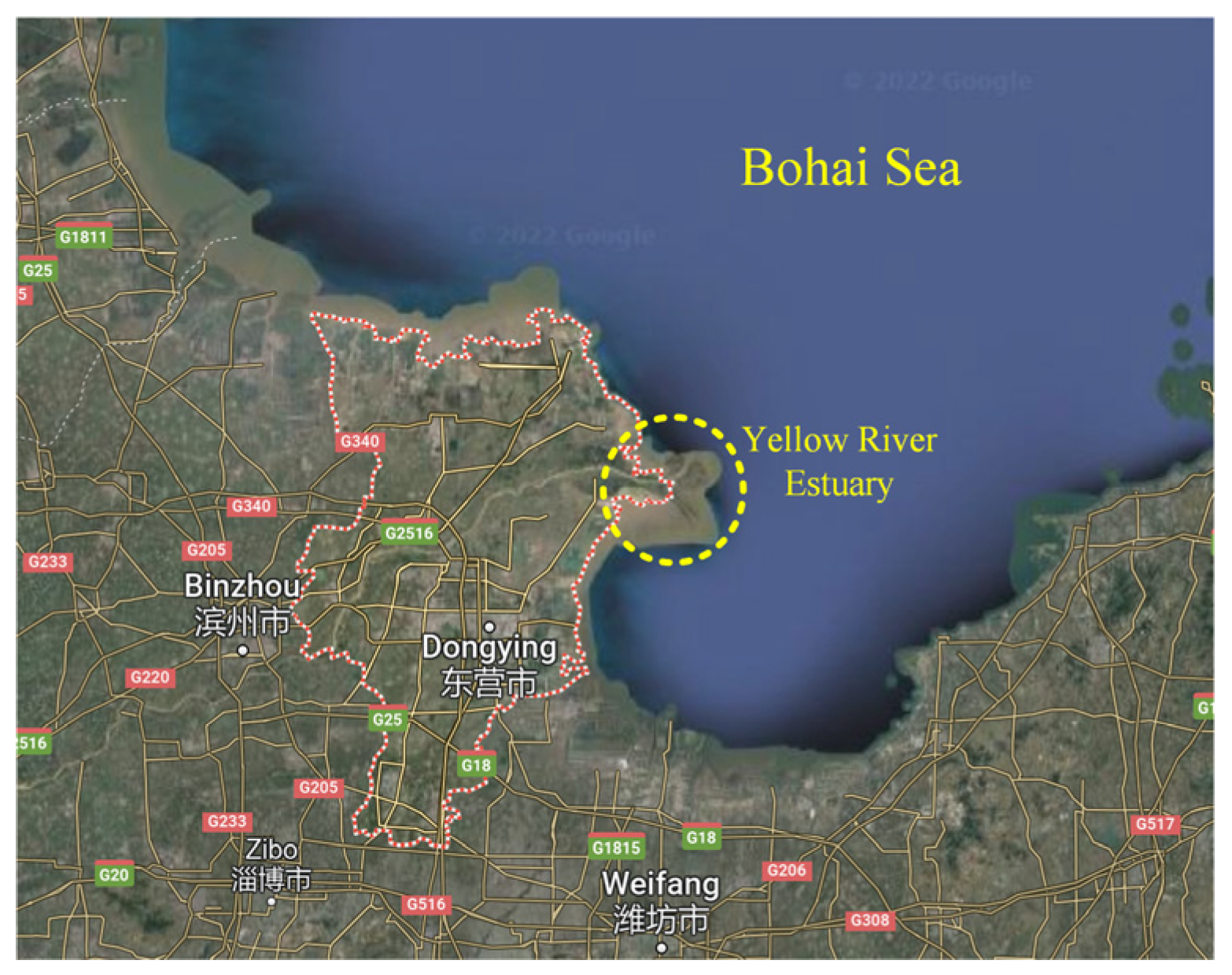
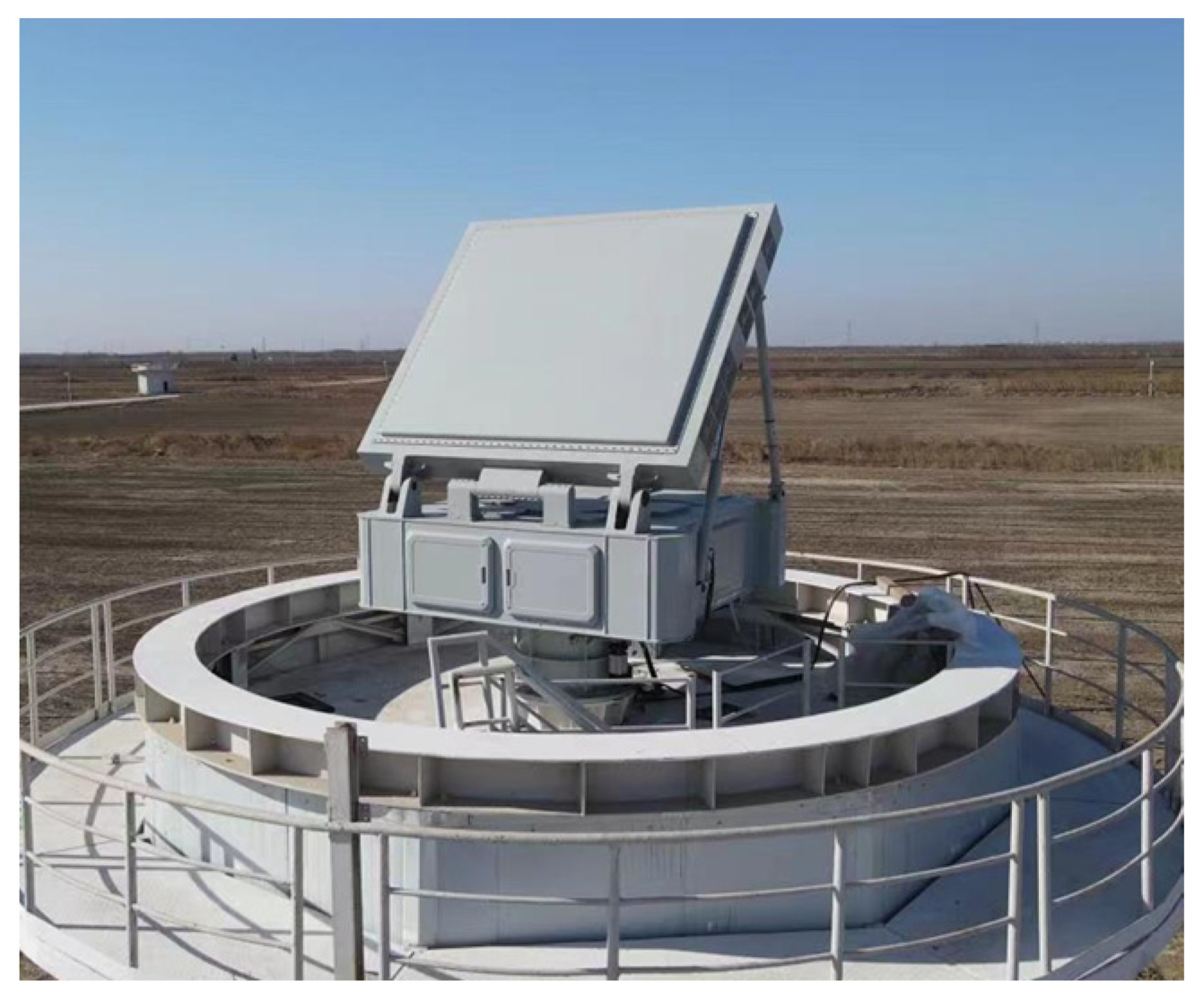


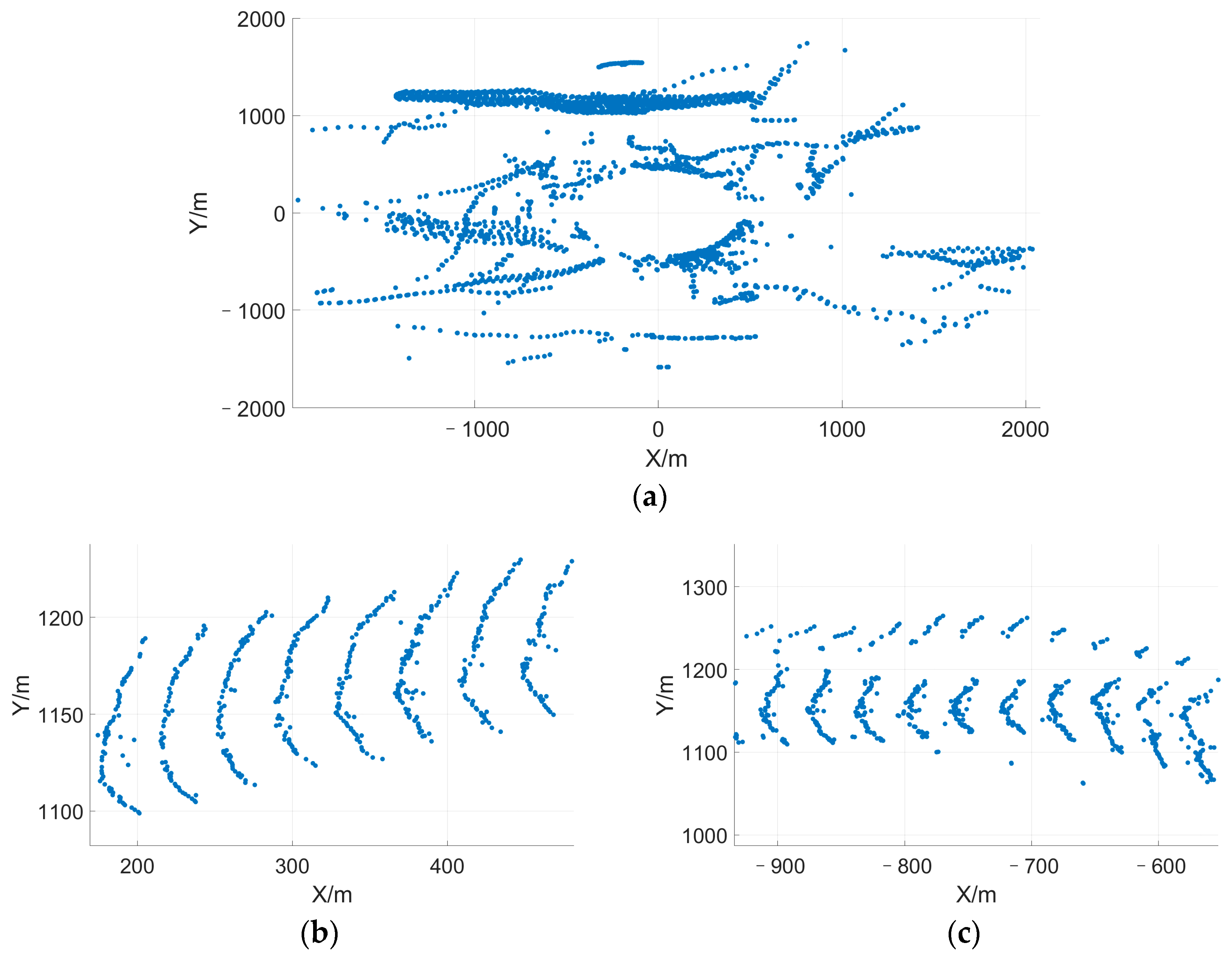

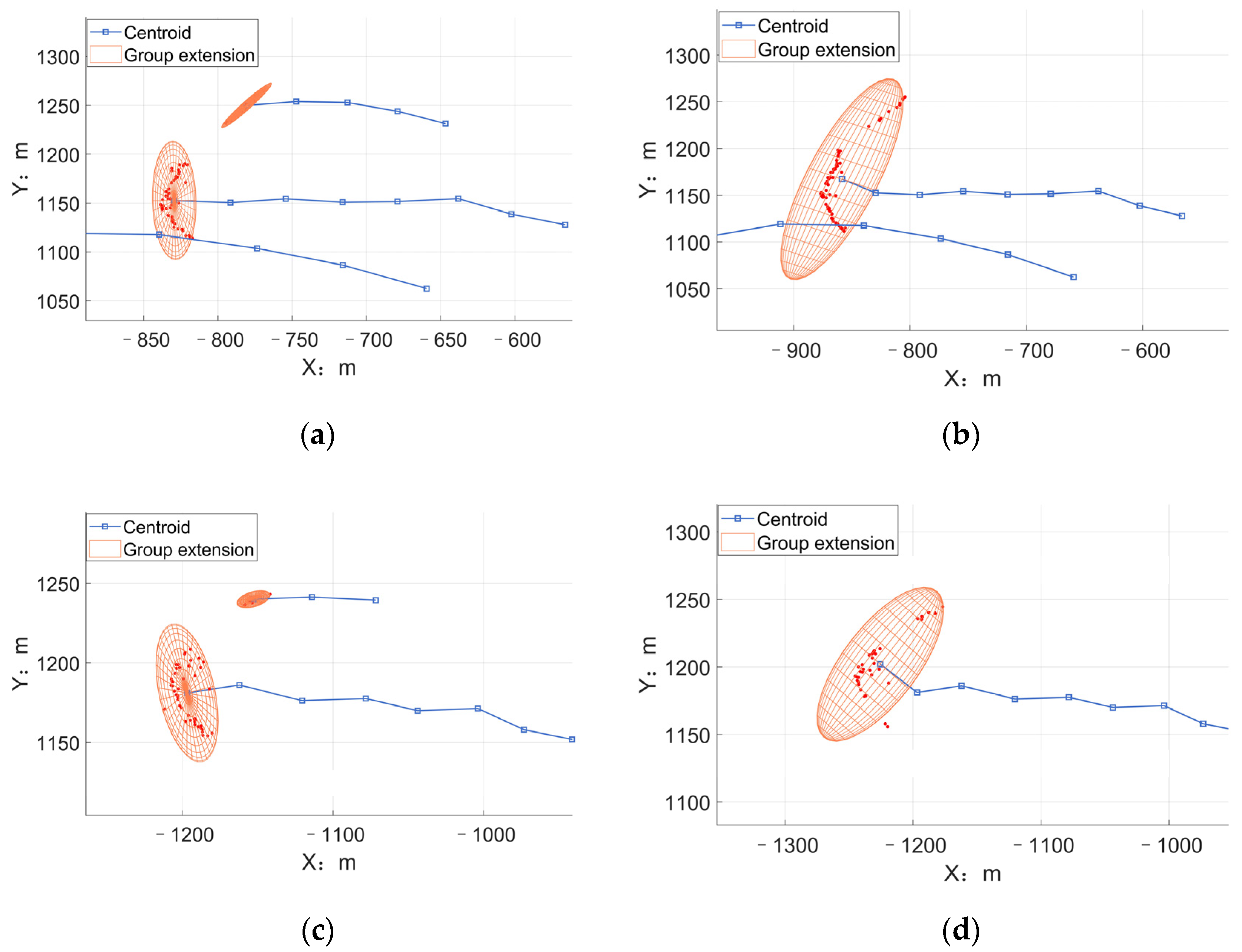
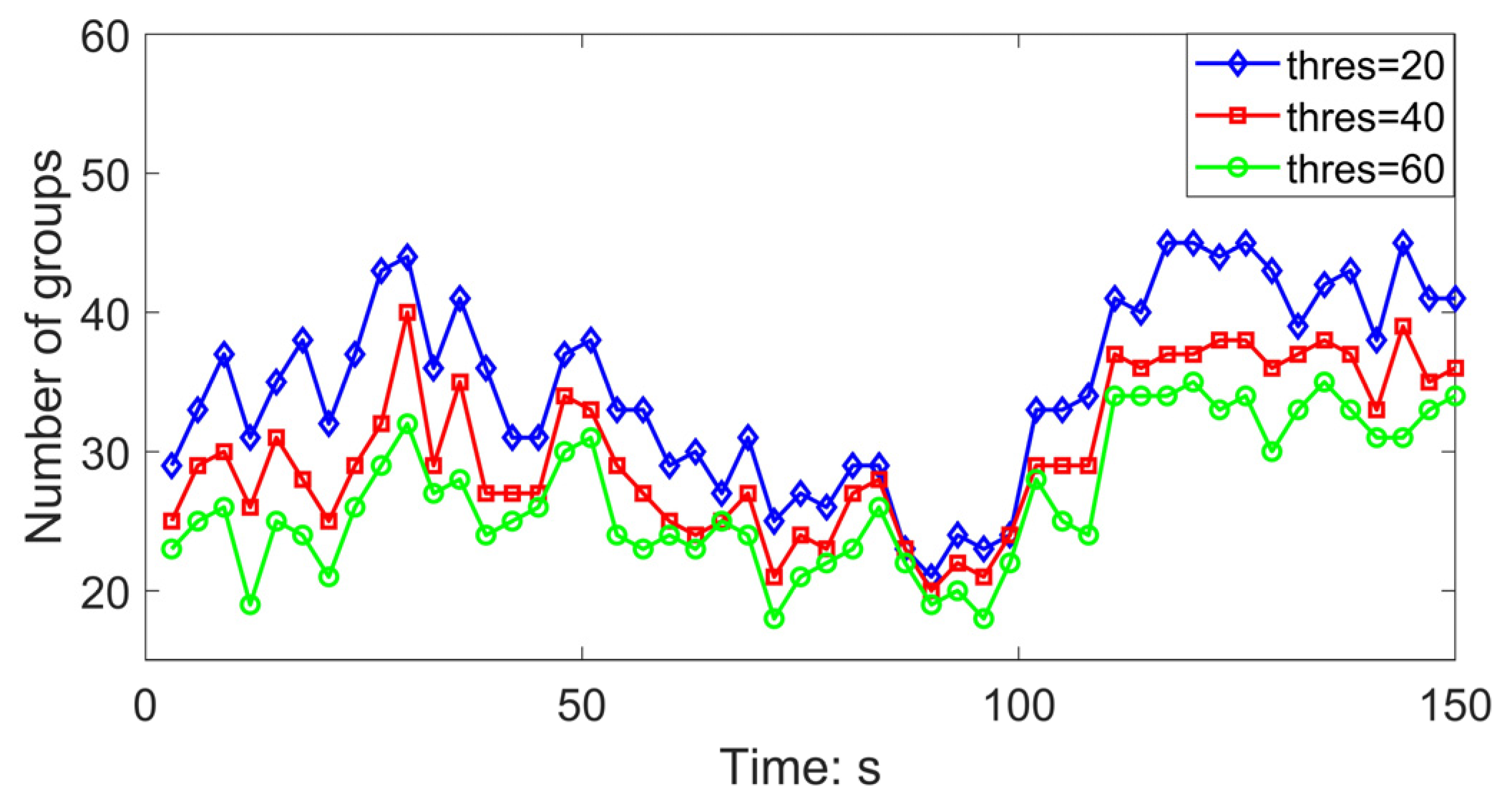

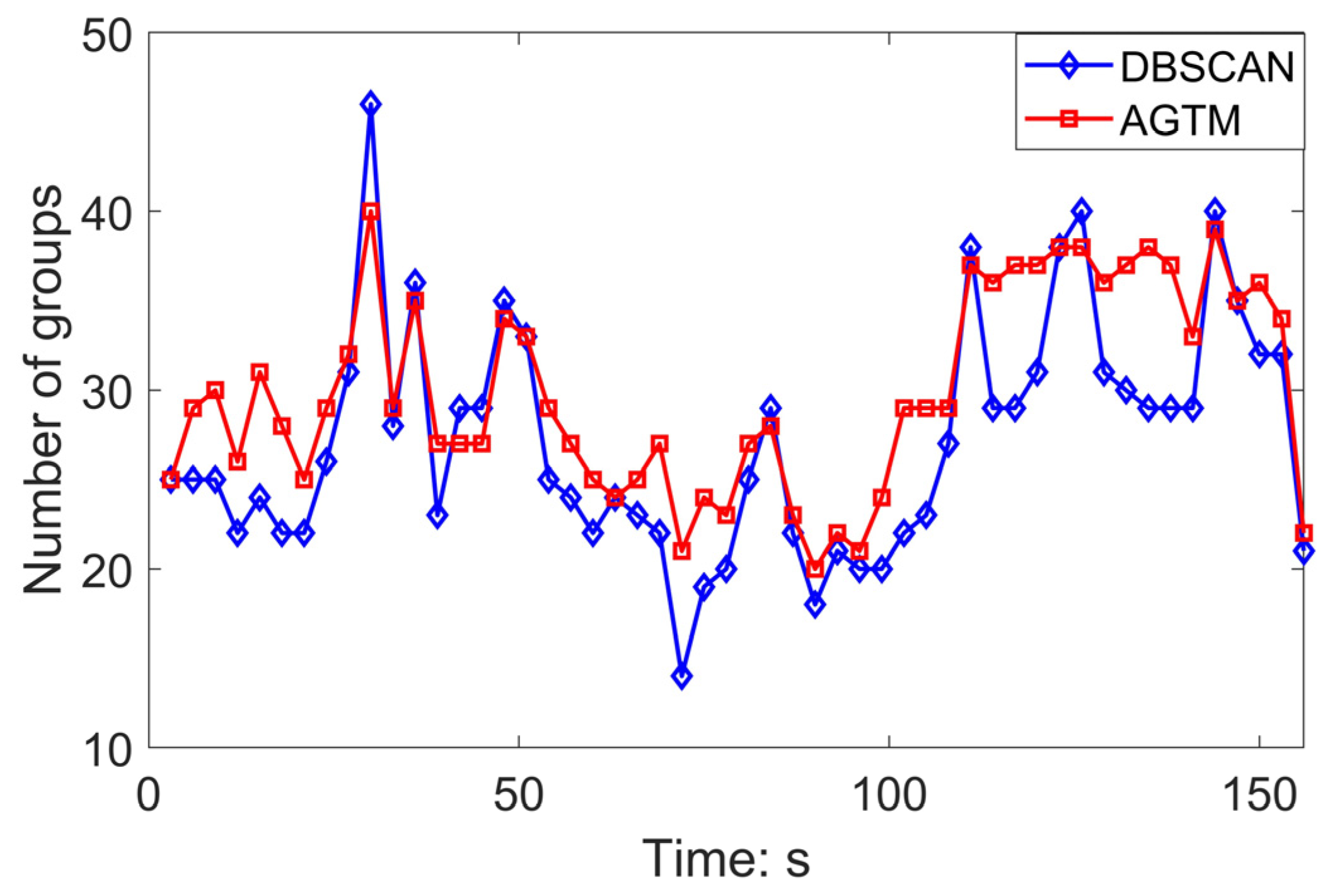

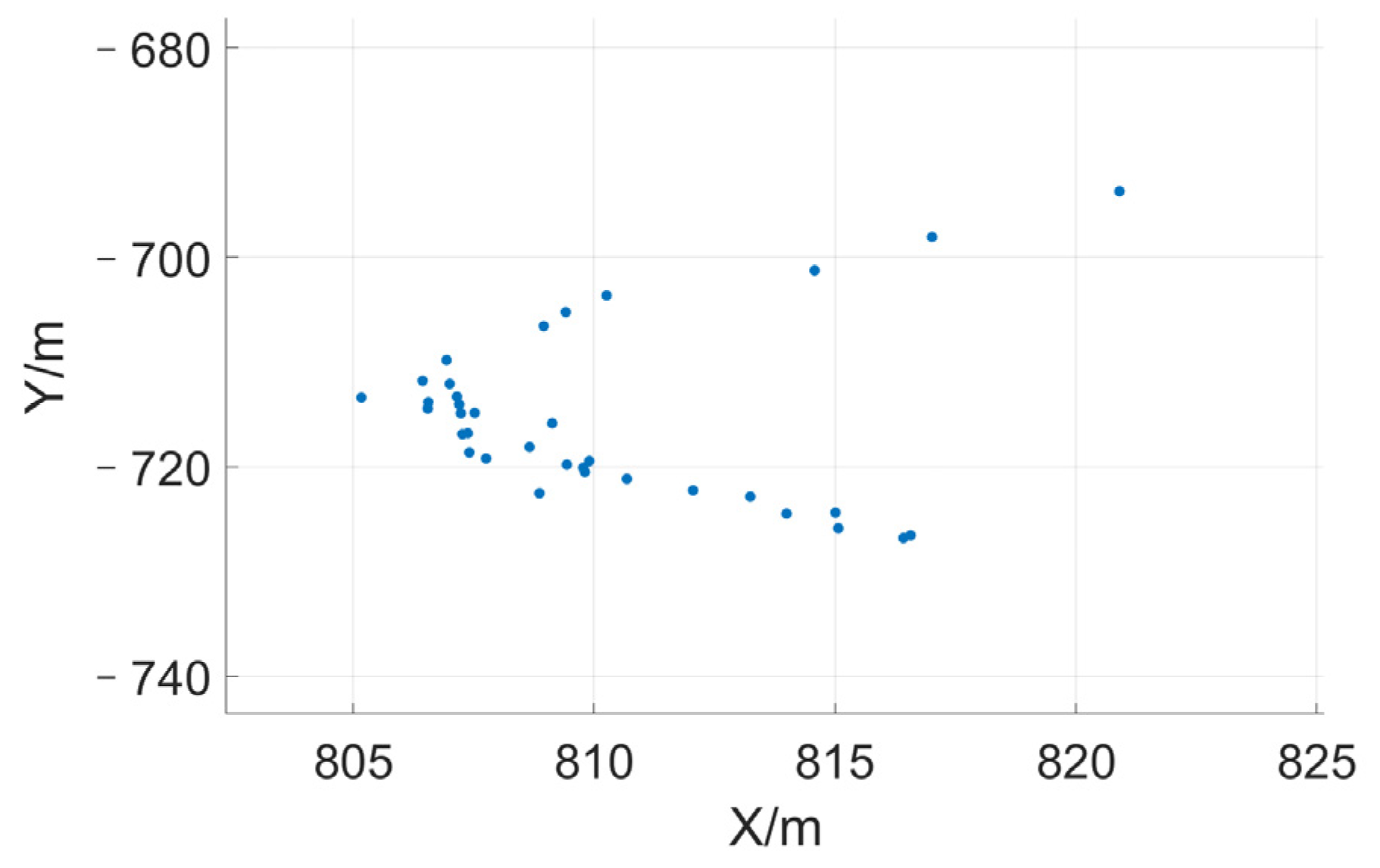
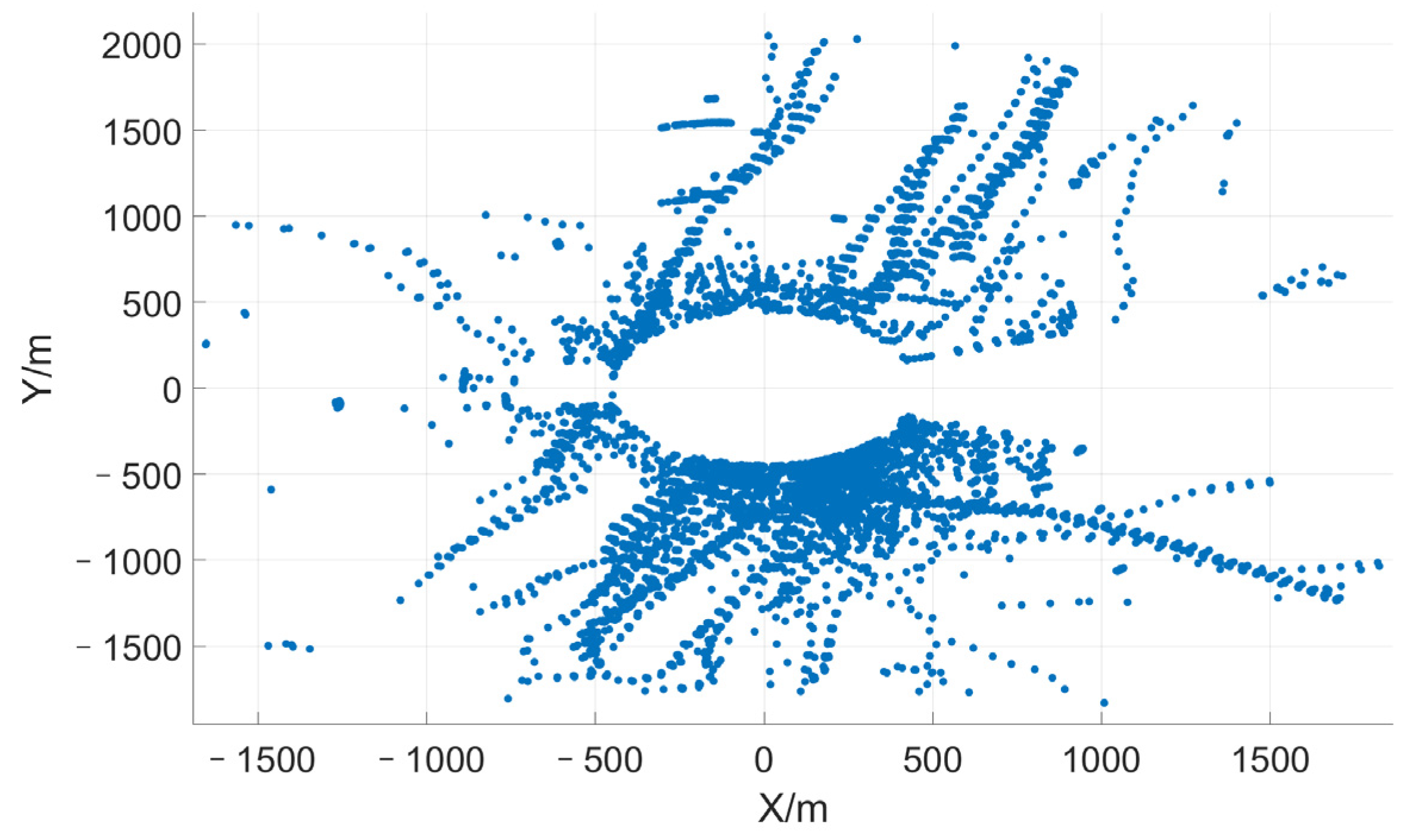

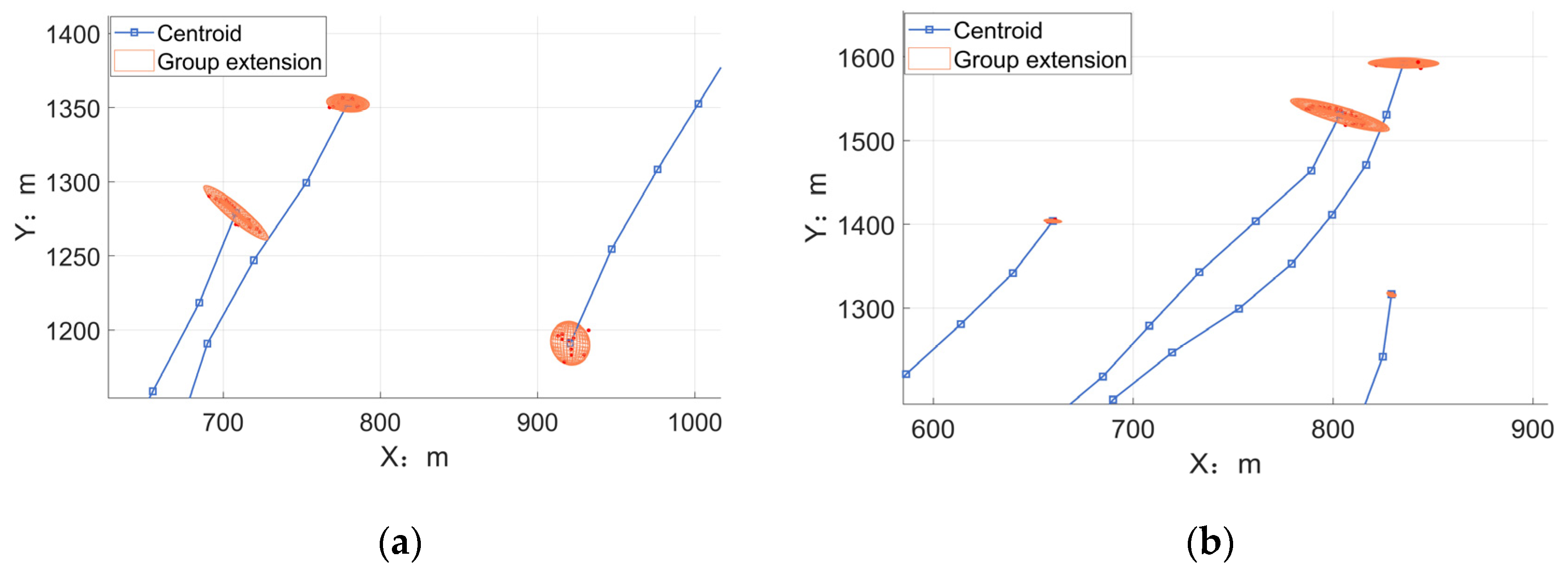

Disclaimer/Publisher’s Note: The statements, opinions and data contained in all publications are solely those of the individual author(s) and contributor(s) and not of MDPI and/or the editor(s). MDPI and/or the editor(s) disclaim responsibility for any injury to people or property resulting from any ideas, methods, instructions or products referred to in the content. |
© 2024 by the authors. Licensee MDPI, Basel, Switzerland. This article is an open access article distributed under the terms and conditions of the Creative Commons Attribution (CC BY) license (https://creativecommons.org/licenses/by/4.0/).
Share and Cite
Jiang, Q.; Wang, R.; Zhang, W.; Jiao, L.; Li, W.; Wu, C.; Hu, C. Monitoring Dynamically Changing Migratory Flocks Using an Algebraic Graph Theory-Based Clustering Algorithm. Remote Sens. 2024, 16, 1215. https://doi.org/10.3390/rs16071215
Jiang Q, Wang R, Zhang W, Jiao L, Li W, Wu C, Hu C. Monitoring Dynamically Changing Migratory Flocks Using an Algebraic Graph Theory-Based Clustering Algorithm. Remote Sensing. 2024; 16(7):1215. https://doi.org/10.3390/rs16071215
Chicago/Turabian StyleJiang, Qi, Rui Wang, Wenyuan Zhang, Longxiang Jiao, Weidong Li, Chunfeng Wu, and Cheng Hu. 2024. "Monitoring Dynamically Changing Migratory Flocks Using an Algebraic Graph Theory-Based Clustering Algorithm" Remote Sensing 16, no. 7: 1215. https://doi.org/10.3390/rs16071215
APA StyleJiang, Q., Wang, R., Zhang, W., Jiao, L., Li, W., Wu, C., & Hu, C. (2024). Monitoring Dynamically Changing Migratory Flocks Using an Algebraic Graph Theory-Based Clustering Algorithm. Remote Sensing, 16(7), 1215. https://doi.org/10.3390/rs16071215







